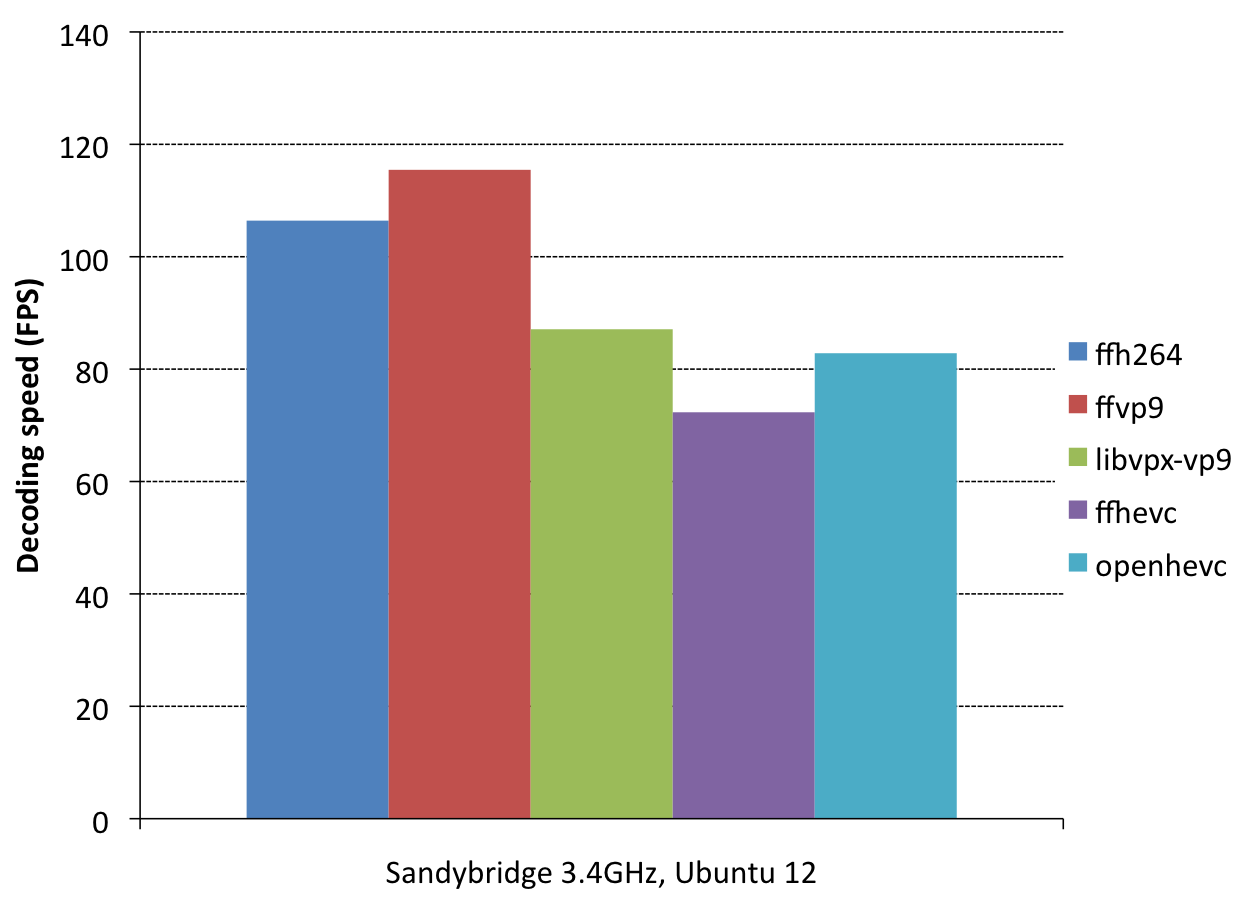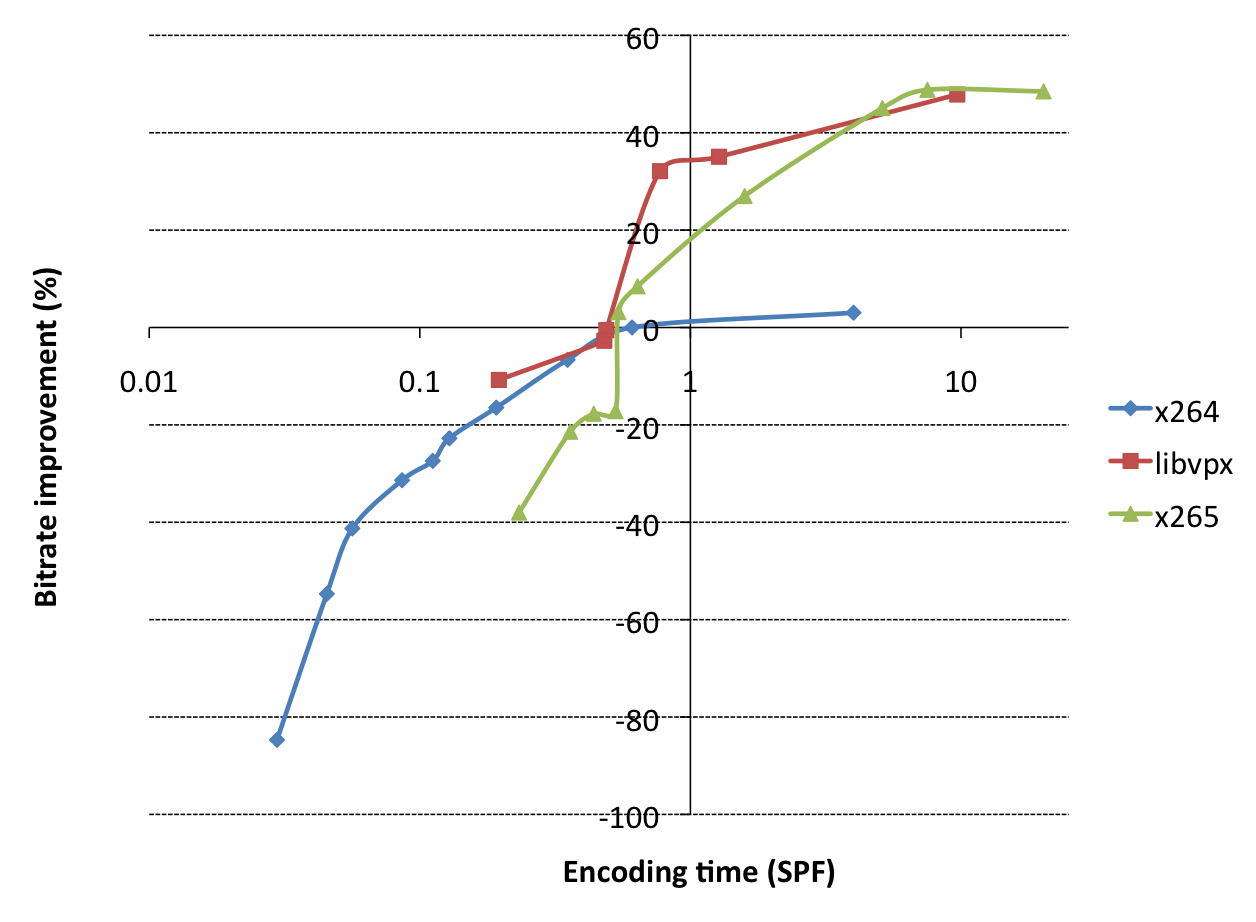
After the purchase of On2 Technologies, Google added the reference implementation of VP8, under a BSD license. VP8 is a video compression format owned by Google and created by On2 Technologies as a successor to VP7.

Their goal is to become even better than HEVC”. “According to a presentation by Google, VP9 is ~7% behind HEVC/H.265 in terms of quality/bitrate when they tested VP9 in Q4 of 2011 (They started developing VP9 in Q3 2011).

Despite support from major players - others include Microsoft, Qualcomm, and Samsung - it’s not very clear when and how HEVC will revolutionize the world. Success for HEVC means that organizations including Mozilla and Google, which have been fighting an uphill battle to encourage instead the VP8 royalty-free codec from Google, will have apotentially even steeper hill to climb. HEVC will significantly reduce bandwidth requirements for video conferencing and streaming, which can be used either to reduce bandwidth costs or to increase video resolution and quality. HEVC can be very useful for small vendors eg those working with network-constrained mobile phones or considering the Broadcasting business area. This will give additional advantage in terms of throughput in parallel processing. Another is that it can divide frames into multiple tiles so multicore processors can spread decoding across parallel subtasks. The biggest evolution from AVC to HEVC is that it breaks video frames up into blocks of 64×64 pixels compared to 16×16.

H.265 is the reference codec from ISO/IEC Moving Picture Experts Group (MPEG) and ITU-T Video Coding Experts Group (VCEG) as ISO/IEC 23008-2 MPEG-H Part 2 and ITU-T H.265. H.265 also opens the way for reaching a new level of video quality envisioned with 4K and, eventually, 8K ultra-HD on ever larger screens with minimum impact on existing bandwidth allocations. Also at the same storage or transmission bandwidth, the quality and/or resolution of an HEVC video sequence should be higher than the corresponding H.264 video sequence. This means that, at the same picture size and quality, an HEVC video sequence will occupy less storage or transmission capacity than the equivalent H.264 video sequence. The result is a video coding standard that can enable better compression and store or transmit video more efficiently than with earlier technologies such as H.264. HEVC is targeted at next-generation HDTV displays and content capture systems which feature progressive scanned frame rates and display resolutions from QVGA (320×240) to 4320p (8192×4320), as well as improved picture quality in terms of noise level, color gamut, and dynamic range.

Two of the key features where HEVC wins compared to H.264/MPEG-4 AVC are support for higher resolution video and improved parallel processing methods, together with efficient parallel processing. Depending on the application requirements HEVC encoders can trade off computational complexity, compression rate, robustness to errors, and encoding delay time. The target is to reduce bitrate requirements by half with comparable image quality, at the expense of increased computational complexity. HEVC was designed to substantially improve coding efficiency compared to H.264/MPEG-4 AVC. High Efficiency Video Coding (HEVC or H.265) is a new standard for video compression that has the potential to deliver far greater performance than earlier standards such as H.264/AVC (Advanced Video Coding).


 0 kommentar(er)
0 kommentar(er)
